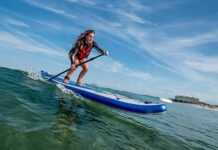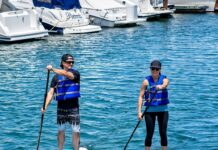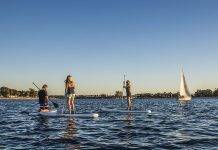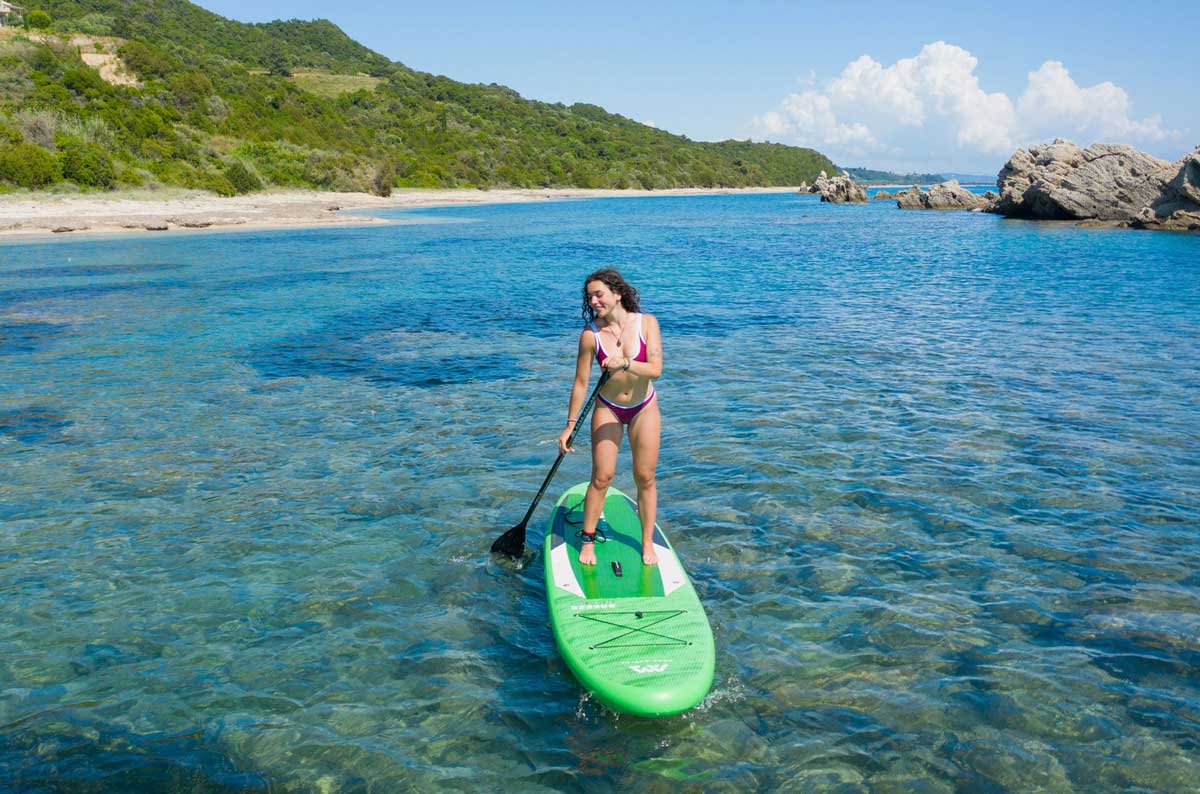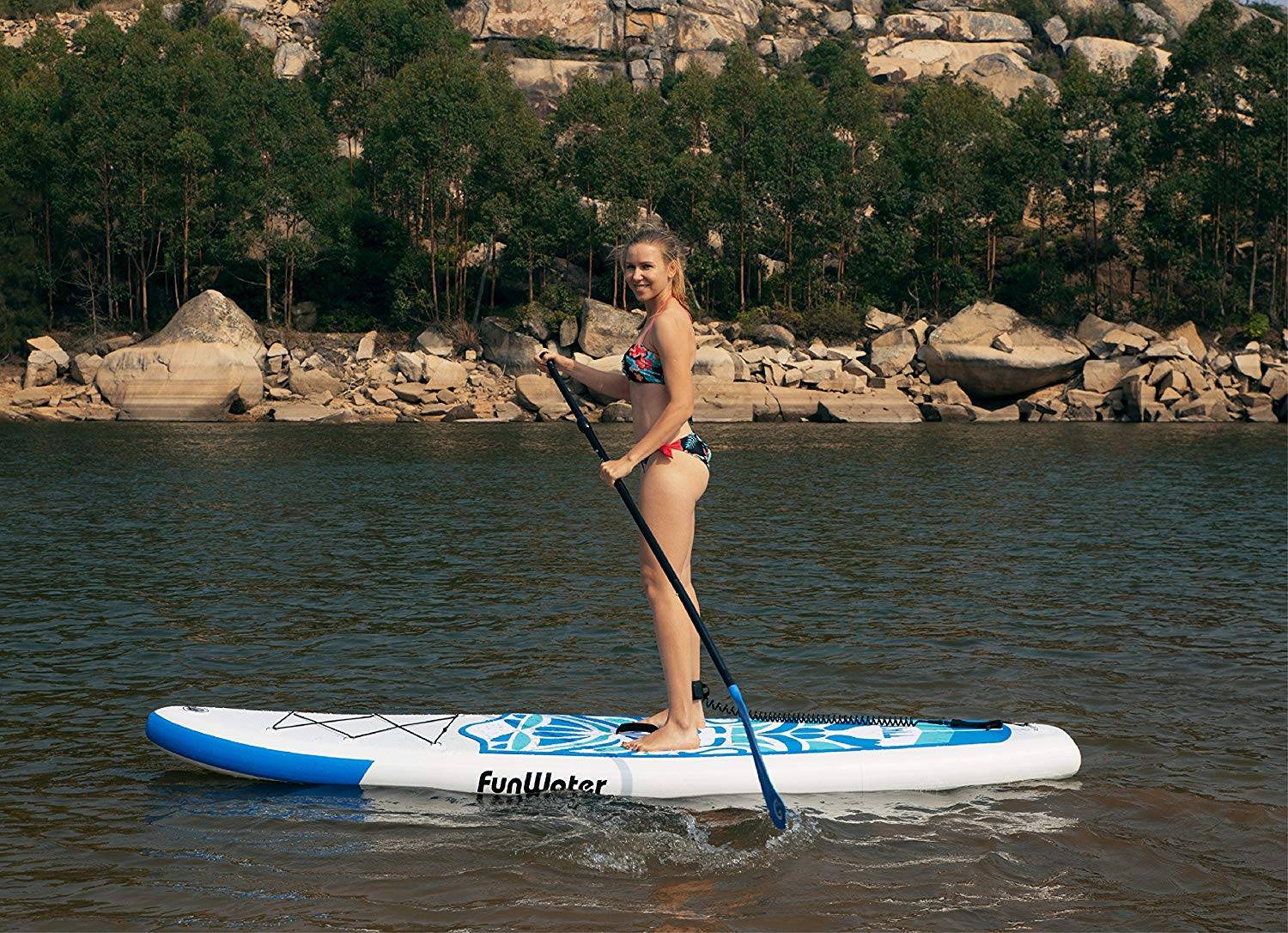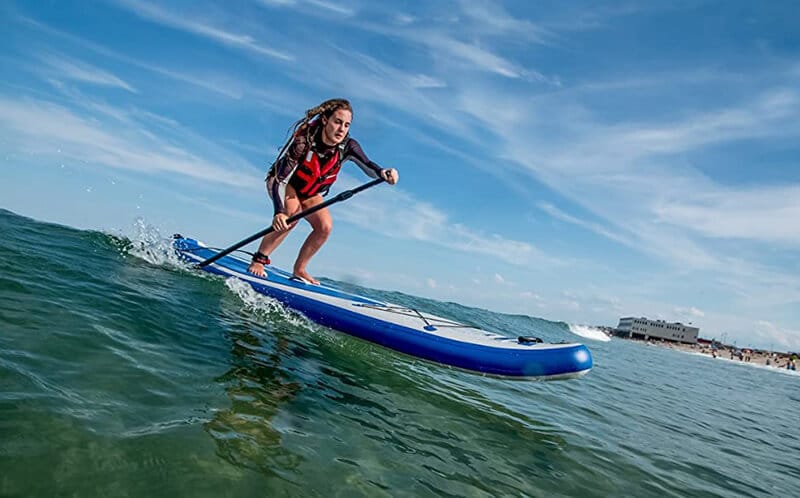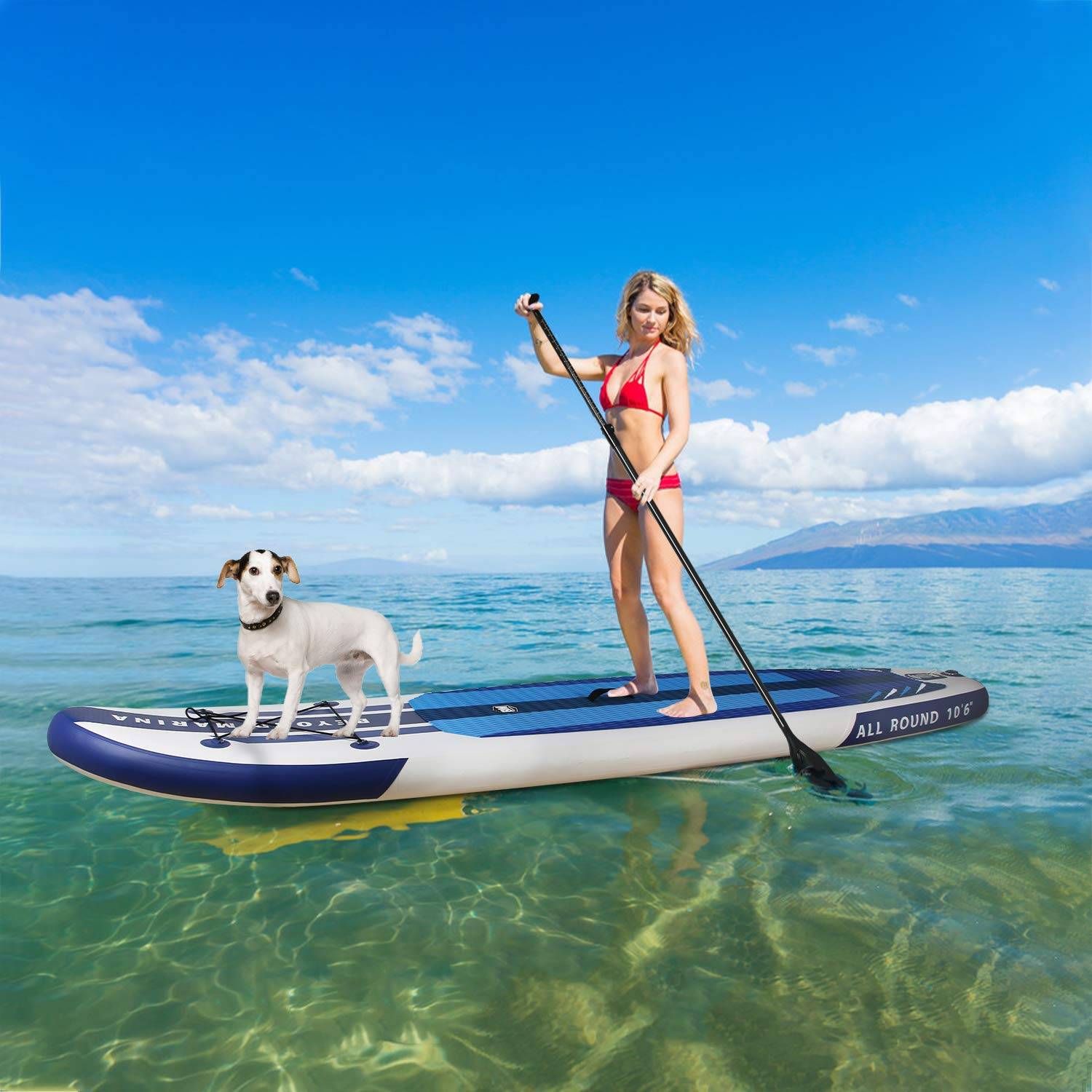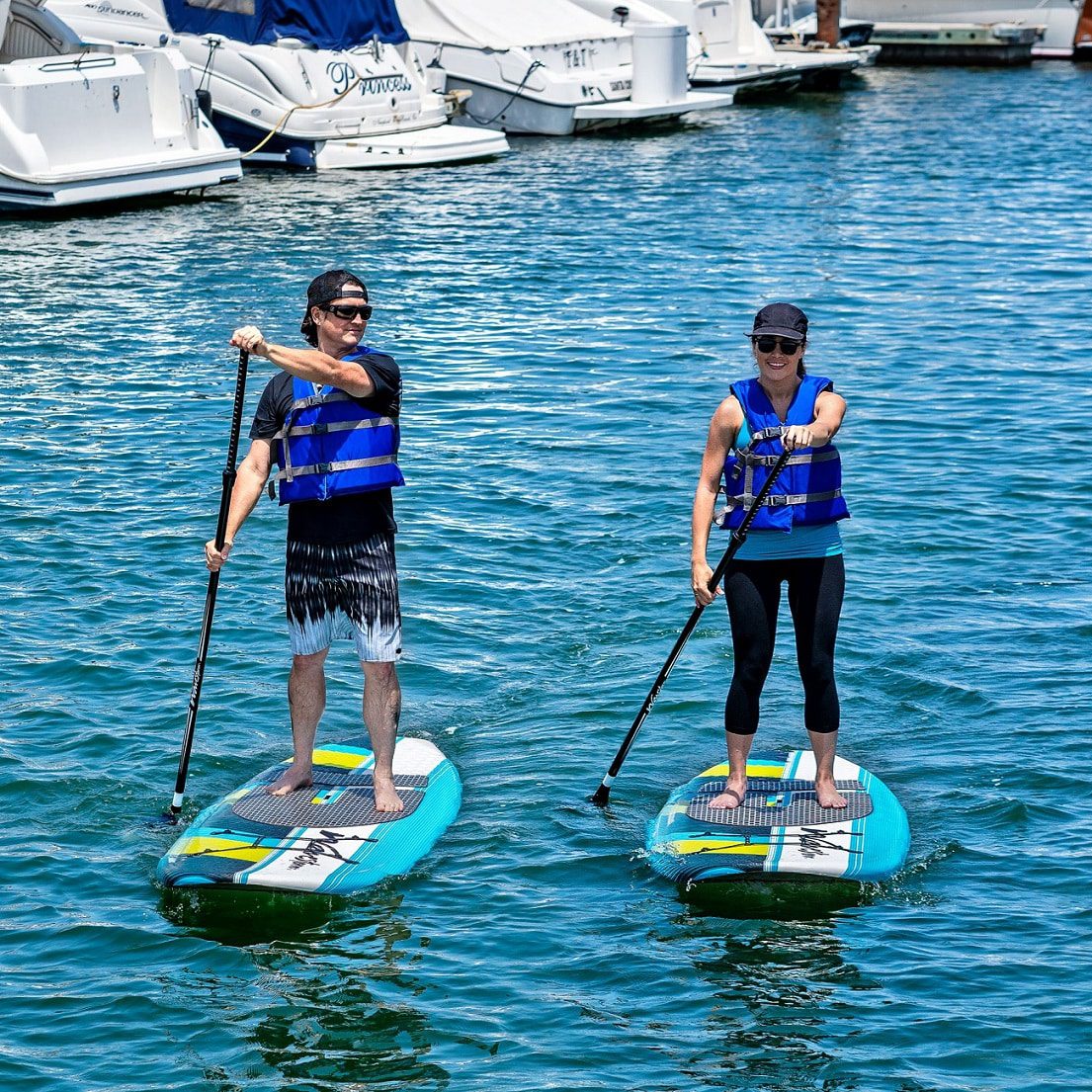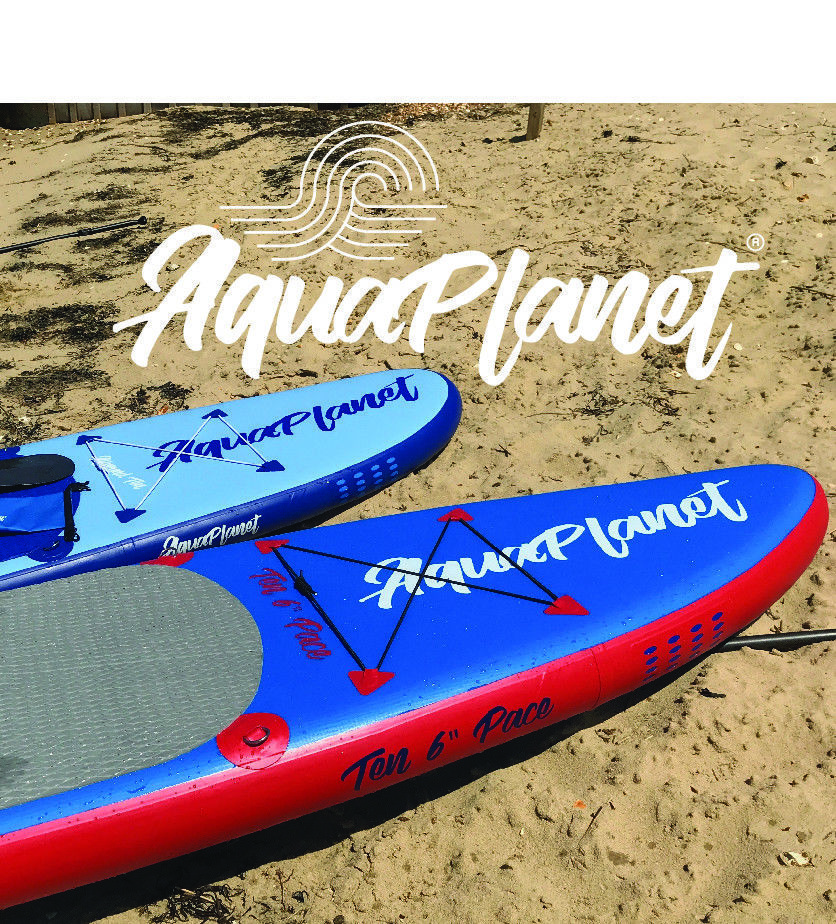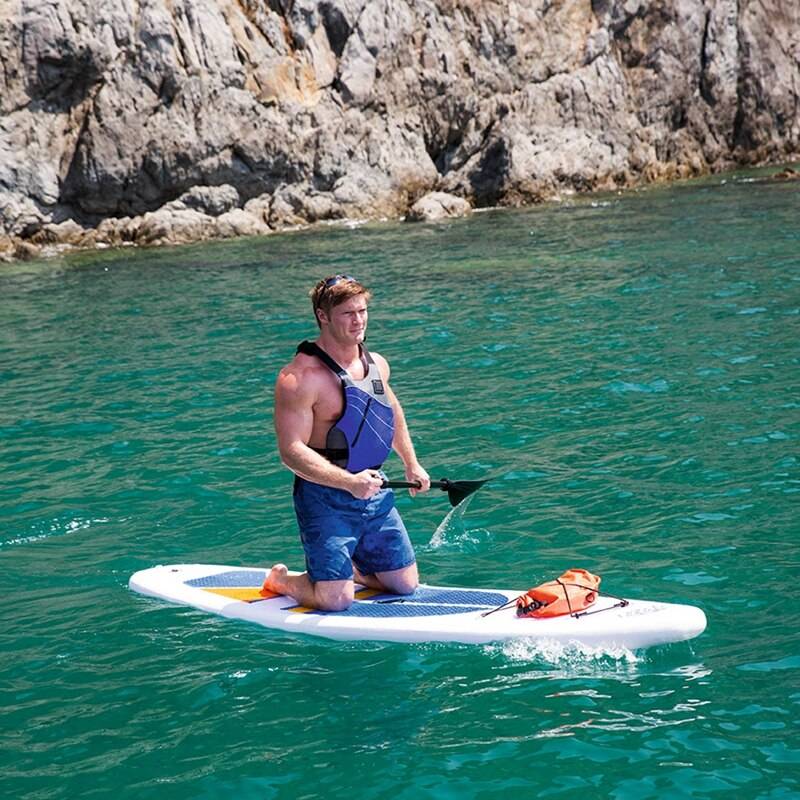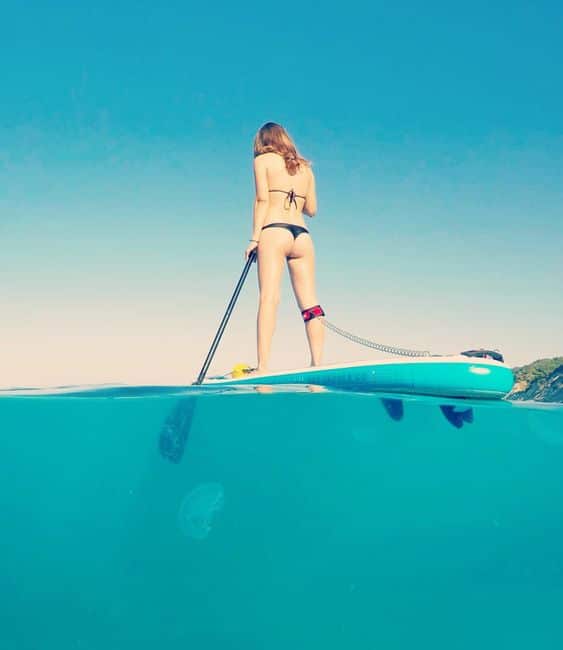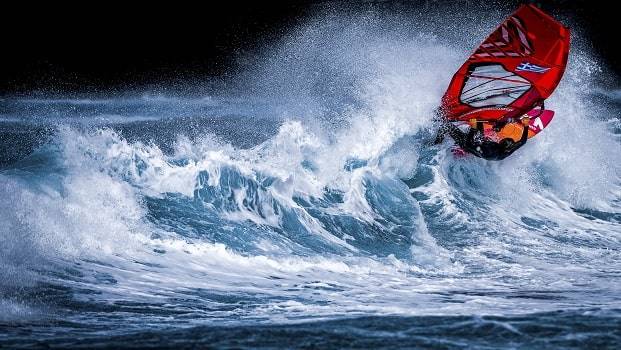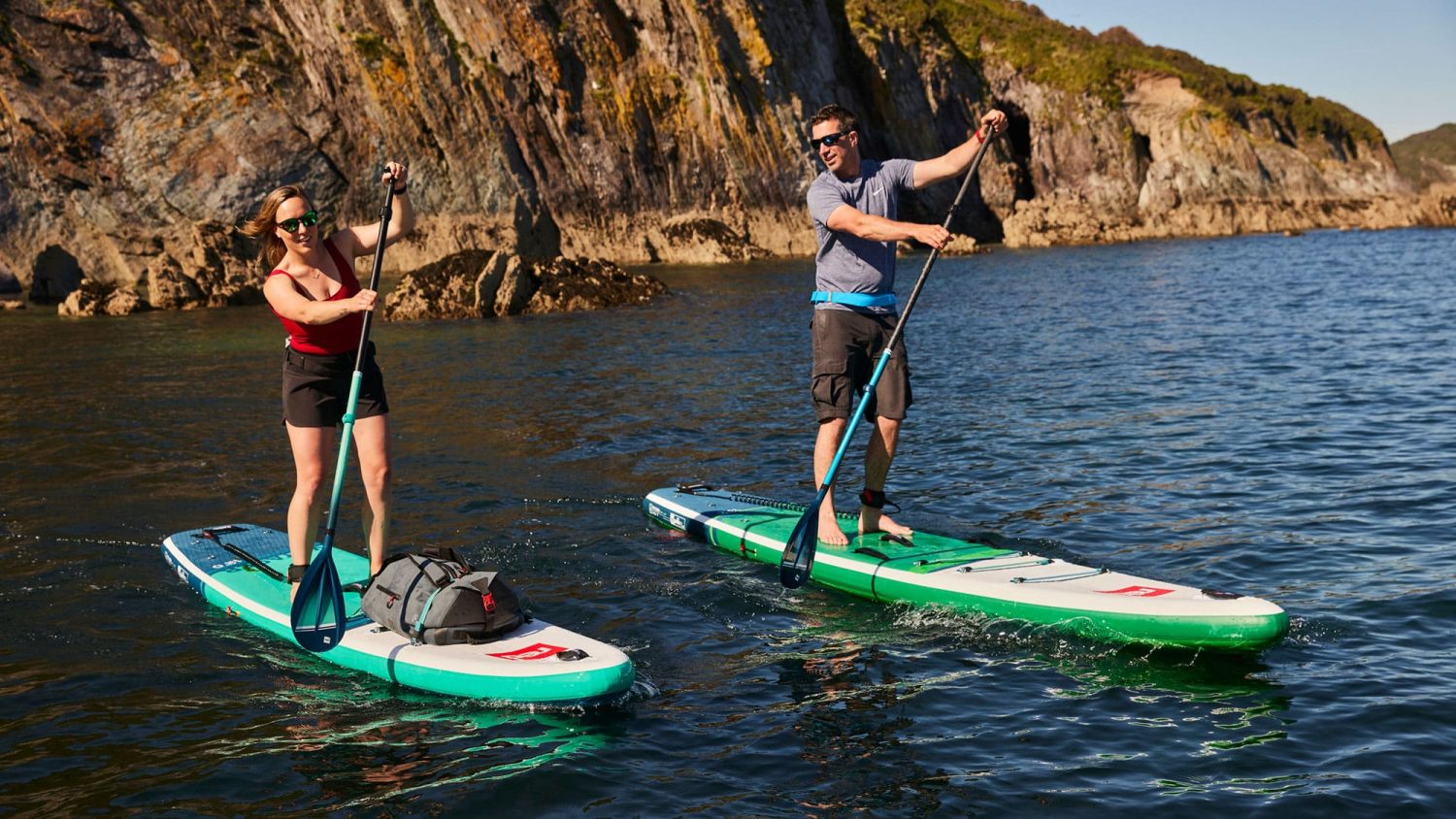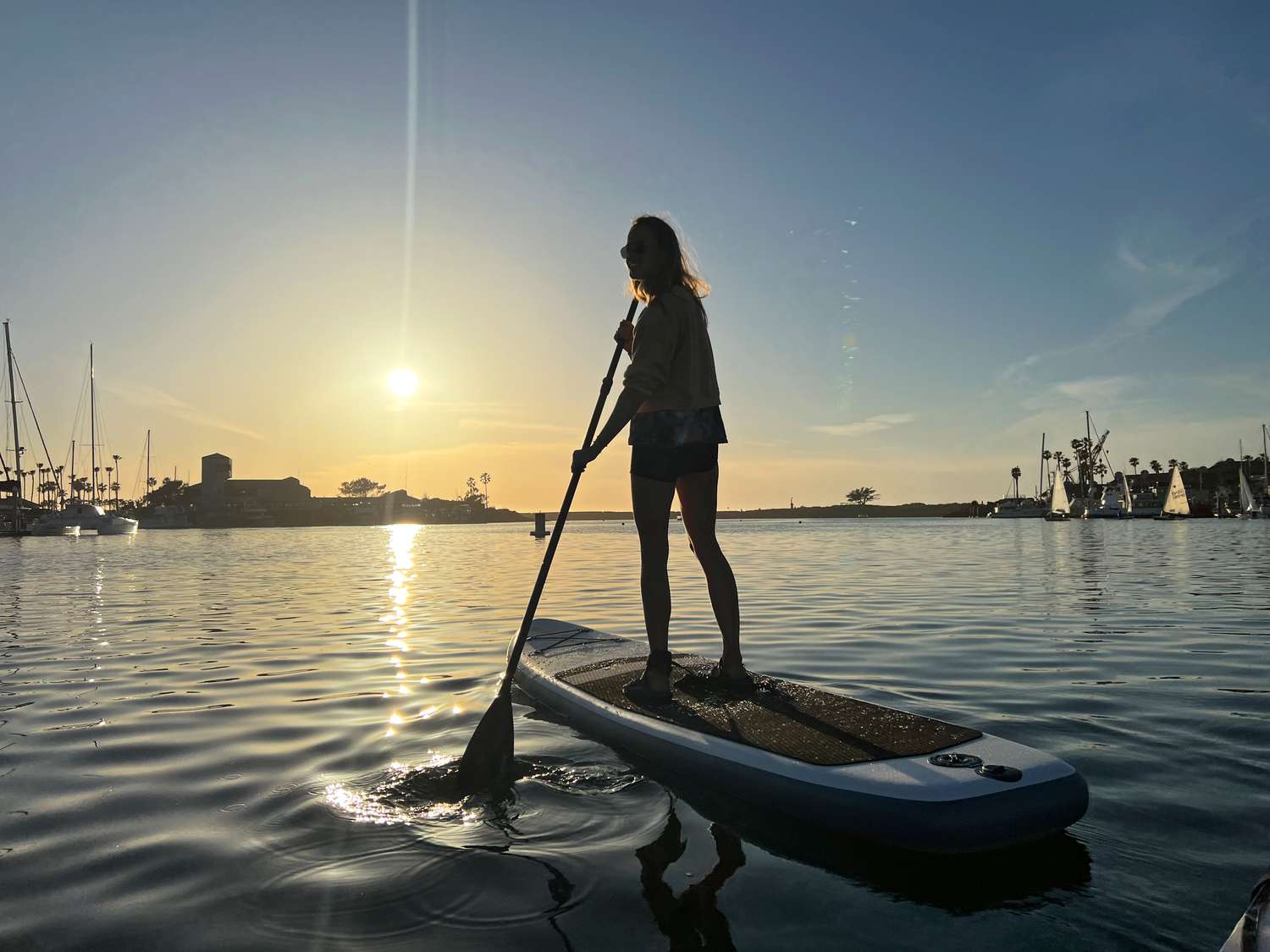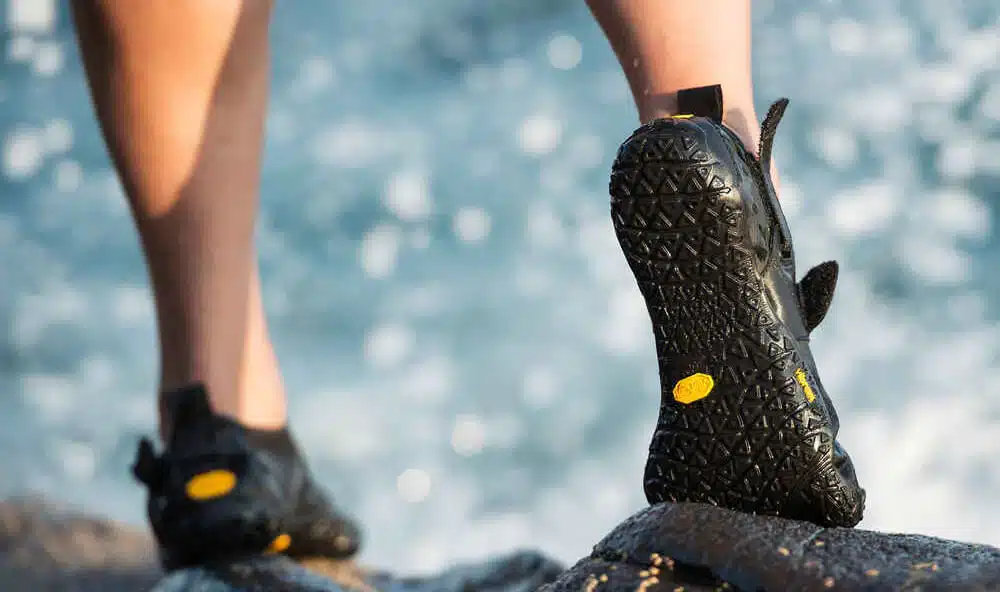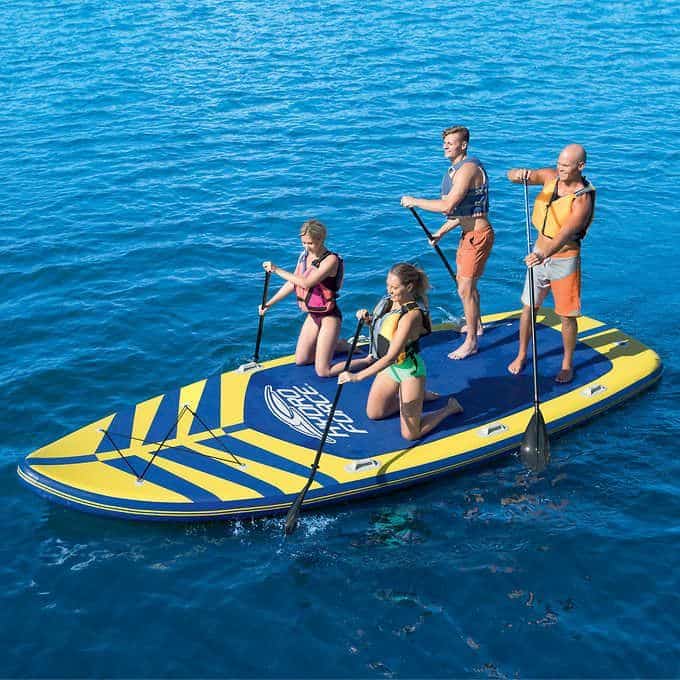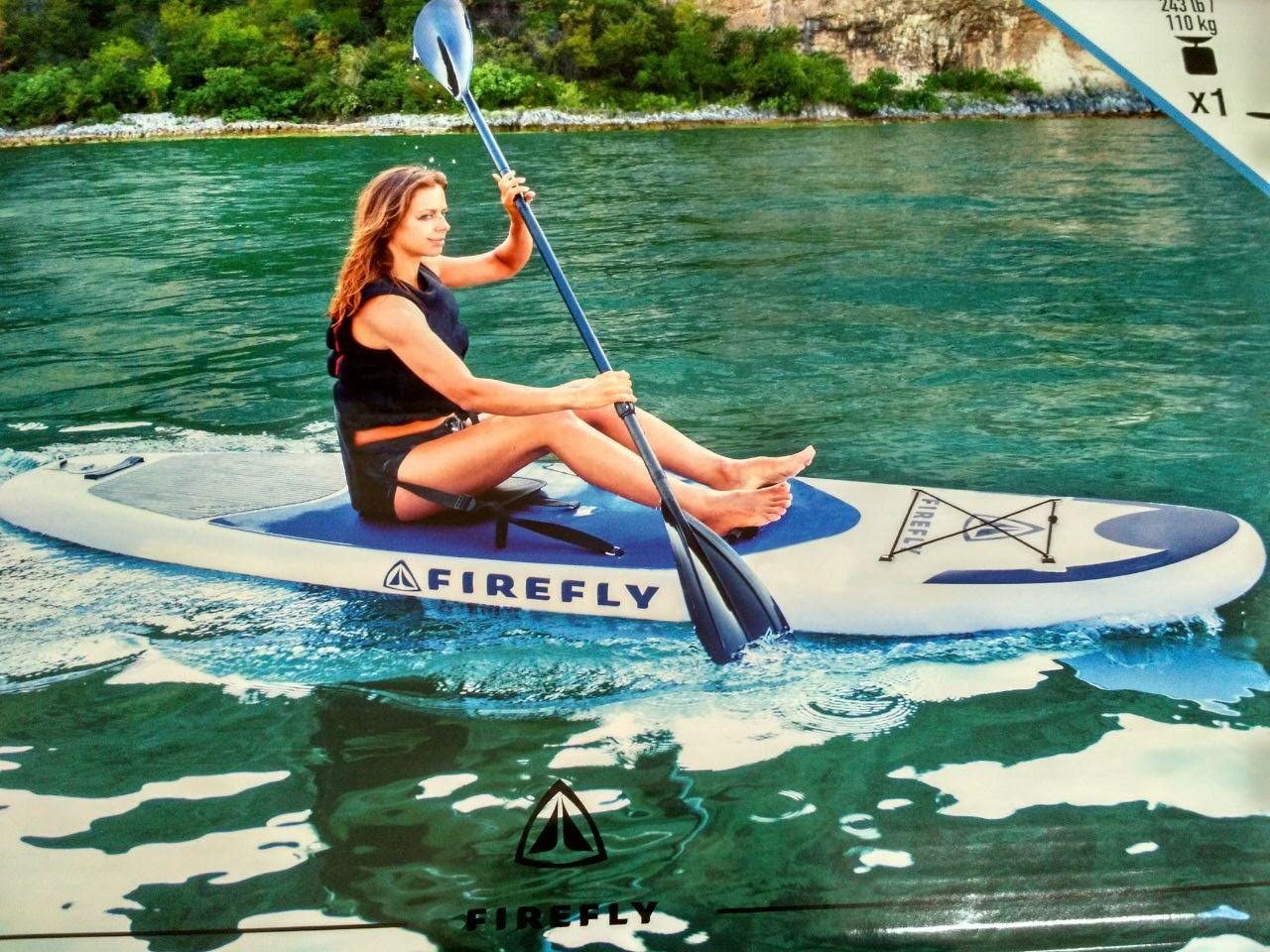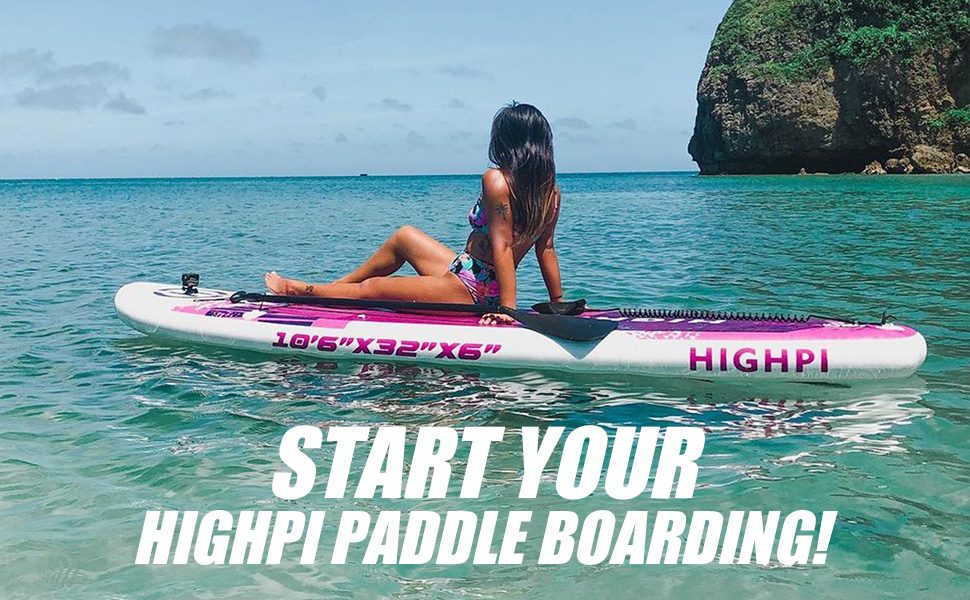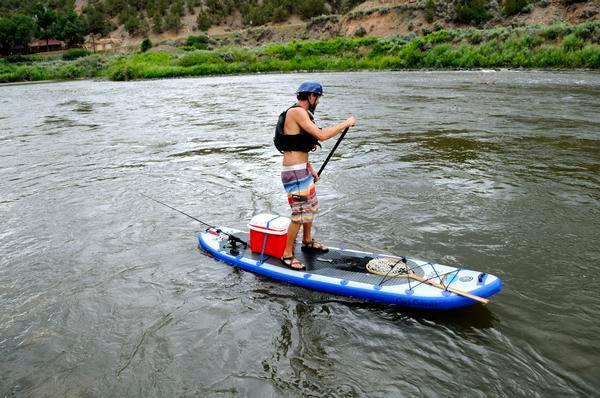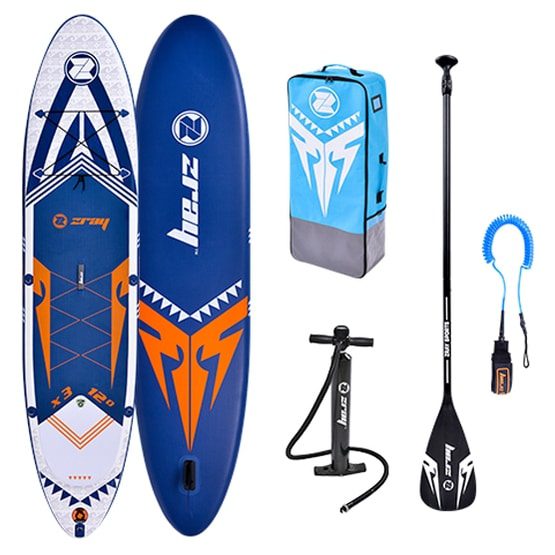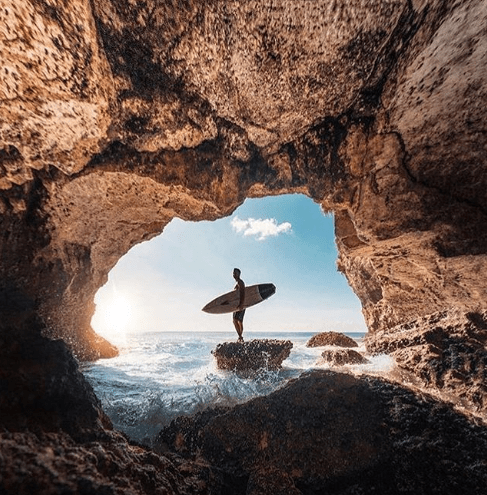Looking to take your stand-up paddleboarding (SUP) fitness to the next level? We’ve got you covered! In this article, we’ll show you some effective techniques and tips on how you can enhance your paddling skills for SUP fitness. Whether you’re a beginner or have some experience, these strategies will help you strengthen your core, improve your endurance, and maximize the benefits of this fantastic water sport. So grab your paddle and get ready to paddle like a pro!
Choose the Right Equipment
Selecting the Appropriate SUP Board
When it comes to improving your paddling skills for SUP fitness, one of the most important factors to consider is selecting the appropriate SUP board. The right board can greatly enhance your performance and make your paddling experience more enjoyable. Factors to consider when choosing a board include your body weight, skill level, and the type of water you’ll be paddling in. Beginners may benefit from a wider and more stable board, while more experienced paddlers may prefer a narrower and faster board.
Choosing the Right Paddle
Equally important to selecting the right SUP board is choosing the right paddle. The paddle serves as the engine that propels you through the water, so it’s crucial to choose one that suits your body and paddling style. Consider the paddle’s length, material, and blade shape. A paddle that’s too long or too short can lead to inefficient strokes and fatigue. Additionally, the paddle’s material can affect its weight and durability, while the blade shape can impact stroke efficiency and stability.
Using the Correct Leash
The correct leash is essential for safety and convenience while paddling. A leash attaches your ankle or calf to the board, preventing it from drifting away from you in case of a fall. When choosing a leash, consider the type of paddling you’ll be doing. Straight leashes are ideal for flat water paddling, while coiled leashes are better suited for surfing and more dynamic paddleboarding activities. Ensure that the leash is properly attached to your board and that it is comfortable and secure on your ankle or calf.
Master the Basic Techniques
Understanding the Correct Posture
Mastering the correct posture is fundamental to improving your paddling skills. Stand tall with your feet hip-width apart and parallel to each other, placing them in the center of the board for balance. Keep your knees slightly bent and engage your core muscles for stability. Maintain a relaxed stance and avoid leaning too far forward or backward, as this can disrupt your balance and affect your paddling efficiency.
Learning the Basic Paddle Stroke
The basic paddle stroke involves using your core and upper body to propel yourself through the water. Begin by extending your arms forward, planting the paddle’s blade fully in the water. Engage your core muscles and rotate your torso, driving the paddle backward in a smooth and controlled motion. As you stroke, focus on pulling the paddle through the water using your core, rather than relying solely on your arms. This technique maximizes your power and minimizes strain on your upper body.
Practicing Efficient Paddle Entries and Exits
Efficient paddle entries and exits are key to effective paddling. When starting a stroke, place the paddle’s blade fully in the water and avoid splashing excessively. As you finish a stroke, exit the paddle smoothly and cleanly by lifting it out of the water with a flick of your wrists. Practicing proper paddle entries and exits will ensure a consistent and efficient rhythm, allowing you to maintain momentum and glide through the water with ease.
Improve Your Balance
Engaging Your Core Muscles
A strong core is essential for maintaining balance while paddling. Engaging your core muscles helps stabilize your body and prevents unnecessary movements that can throw off your balance. Incorporate exercises that target your core, such as planks, crunches, and twisting exercises, into your fitness routine. By strengthening your core, you’ll improve your stability on the board and enhance your overall paddling performance.
Practicing Yoga for SUP Fitness
Yoga is a fantastic way to improve your balance and flexibility, both of which are crucial for effective paddling. By practicing yoga, you’ll develop a stronger mind-body connection, allowing you to better control your movements and balance on the board. Focus on poses that target your core, such as boat pose and plank, as well as poses that increase hip mobility, such as warrior II and pigeon pose. Incorporating yoga into your SUP fitness routine will enhance your balance and body awareness.
Using Balance Training Equipment
Balance training equipment, such as balance boards or inflatable discs, can greatly improve your paddling skills. These tools simulate the instability of being on the water, forcing your muscles to work harder to maintain balance. Start by standing on the balance board or disc and practice shifting your weight from side to side and front to back. As you progress, incorporate paddle strokes while maintaining your balance. Training with balance equipment will help you develop better stability and control while paddling.
Enhance Your Strength
Building Upper Body Strength
Paddling requires significant upper body strength, so it’s important to incorporate exercises that target your arms, shoulders, and back into your fitness routine. Push-ups, pull-ups, and dumbbell exercises can help build strength and endurance in these muscle groups. Additionally, practicing strokes on land can help simulate the paddling motion and strengthen the specific muscles used while on the water. By building your upper body strength, you’ll paddle with greater power and endurance.
Performing Resistance Training Exercises
Incorporating resistance training exercises into your workout routine can further enhance your paddling skills. Resistance bands, weights, and functional training machines can all be used to target specific muscle groups involved in paddling. Focus on exercises that mimic the paddling motion, such as cable or band rows, to strengthen your back and shoulders. Performing resistance training exercises regularly will improve your muscular strength and endurance, allowing you to paddle for longer periods without tiring.
Incorporating Cardiovascular Exercises
To improve your endurance and stamina for paddling, it’s crucial to engage in regular cardiovascular exercises. Activities such as running, cycling, swimming, or rowing will help increase your lung capacity, improve your cardiovascular fitness, and enhance your overall paddling performance. Aim for at least 150 minutes of moderate-intensity cardio exercise per week, or 75 minutes of vigorous-intensity exercise. By incorporating cardiovascular exercises into your routine, you’ll paddle with greater endurance and efficiency.
Increase Your Endurance
Gradually Increasing Paddle Duration
One of the key aspects of improving your paddling skills is gradually increasing your paddle duration. Begin by paddling for shorter periods and gradually extend your time on the water as your endurance improves. Start with 20-30 minute sessions and gradually work your way up to longer durations. This gradual progression allows your muscles and cardiovascular system to adapt to the demands of paddling, allowing you to go further and paddle for extended periods of time.
Utilizing Interval Training
Interval training is a highly effective method for increasing endurance and improving your paddling performance. Incorporate intervals of high-intensity paddling, followed by short periods of low-intensity or rest. For example, paddle at a high intensity for two minutes, then paddle at a lower intensity or rest for one minute. Repeat this cycle for several sets. Interval training challenges your body to work harder and recover more efficiently, ultimately increasing your paddling endurance.
Including Cross-training Activities
To further improve your endurance for paddling, incorporate cross-training activities into your fitness routine. Activities such as cycling, running, or swimming engage different muscle groups and provide a break from the repetitive motion of paddling. Cross-training not only improves your overall fitness and endurance but also helps prevent overuse injuries that can result from only paddling. By incorporating diverse activities into your training, you’ll enhance your paddling endurance and overall fitness.
Refine Your Technique
Video Analysis of Your Paddling
One effective way to refine your paddling technique is through video analysis. Record yourself while paddling and review the footage to identify areas for improvement. Pay attention to your posture, paddle stroke, and overall body positioning. Compare your technique to instructional videos or seek feedback from experienced paddlers. By analyzing your paddling technique and making necessary adjustments, you’ll paddle more efficiently and reduce the risk of injury.
Seeking Professional Instruction
Seeking professional instruction from experienced paddlers or certified instructors can greatly accelerate your progress and refine your technique. They can provide valuable feedback, offer personalized guidance, and teach you advanced paddling techniques. Whether through private lessons or group classes, professional instruction allows you to learn from experts, ask questions, and receive immediate feedback. With the guidance of a skilled instructor, you’ll improve your paddling technique and become a more confident and skilled paddler.
Joining a Paddling Group or Club
Joining a paddling group or club is a fantastic way to refine your technique while enjoying the camaraderie of fellow paddlers. Being part of a group provides opportunities to paddle with more experienced individuals, learn from their expertise, and receive feedback in a supportive environment. Paddling groups and clubs often organize training sessions and group paddles, allowing you to practice and refine your skills. Additionally, being part of a community of paddlers can provide motivation and encouragement as you work towards improving your paddling skills.
Improve Your Navigation Skills
Understanding Tides and Currents
Improving your navigation skills is essential for safe and effective paddling. Understanding tides and currents is crucial to plan your paddling trips and optimize your performance. Learn how tides and currents affect the body of water you’ll be paddling in, including their direction, speed, and strength. This knowledge will help you navigate more efficiently, conserve energy, and avoid getting caught in dangerous conditions. Consult tidal charts and local resources to familiarize yourself with the tides and currents in your area.
Learning to Read Maps and Charts
To navigate effectively, it’s important to learn how to read maps and charts specific to your paddling location. Topographic maps, nautical charts, and GPS devices can provide valuable information about the waterways, landmarks, and potential hazards in your area. Familiarize yourself with the symbols, legends, and scale used in these resources to accurately interpret the information. Developing map-reading skills will enhance your navigational abilities and increase your confidence while paddling in unfamiliar territories.
Practicing Navigation Exercises
Practicing navigation exercises can significantly improve your skills and confidence on the water. Start with simpler exercises such as navigating between buoys or landmarks, gradually progressing to more complex maneuvers such as plotting a course using longitude and latitude coordinates. Utilize maps, charts, and compasses to practice your navigation skills in various conditions and waterways. Practicing navigation exercises regularly will sharpen your sense of direction and give you the tools to explore new paddling destinations.
Practice Different Paddling Environments
Paddling in Calm Waters
While it’s important to challenge yourself, practicing in calm waters allows you to focus on refining your technique and becoming comfortable on the board. Start by paddling in sheltered areas such as lakes or calm rivers. These environments offer minimal waves and currents, allowing you to concentrate on perfecting your strokes, balance, and navigation skills. Mastering the basics in calm waters sets a solid foundation for tackling more challenging paddling environments.
Navigating Through Waves
Once you’ve gained proficiency in calm waters, challenge yourself by navigating through waves. Choose a beach with consistent wave breaks and gradually progress to larger waves as your skills improve. Maneuvering through waves requires precise timing, balance, and an understanding of wave dynamics. Practice paddling out through breaking waves, timing your strokes to match the wave sets, and maintaining stability in choppy conditions. Navigating through waves will enhance your paddling skills and prepare you for more dynamic paddling scenarios.
Challenging Yourself with Stronger Currents
To further develop your paddling skills, seek out waterways with stronger currents. Paddling against a current requires increased strength, stamina, and efficient technique. Start by selecting areas with gentle to moderate currents and practice maintaining your course, adjusting your strokes to counteract the current’s pull. As you become more proficient, gradually progress to areas with stronger currents. Challenging yourself with stronger currents will push your skills to new levels and prepare you for more demanding paddling adventures.
Focus on Safety
Using a Personal Flotation Device
Safety should always be a priority when paddling. Regardless of your skill level or the conditions, always wear a personal flotation device (PFD) or life jacket. Ensure that the PFD is properly sized and fits snugly. Even in calm waters, unexpected situations can arise, and having a PFD can save your life. Make it a habit to wear your PFD at all times while on the water, ensuring your safety and peace of mind.
Mastering Self-rescue Techniques
Knowing how to perform self-rescue techniques is essential for all paddlers. Practice techniques such as re-entering your board after falling off, towing your board, and using different paddles as makeshift anchors. These skills can be invaluable in situations where you are separated from your board or need to assist others. Seek instruction from experienced paddlers or take self-rescue courses to ensure you have the necessary skills to handle unexpected scenarios.
Being Aware of Weather Conditions
Weather conditions can have a significant impact on your paddling experience and safety. Pay close attention to weather forecasts, including wind speed, direction, and potential storms. Avoid paddling in extreme weather conditions or when there are high winds, thunderstorms, or heavy fog. Be aware of sudden weather changes and always err on the side of caution. Staying informed and being aware of weather conditions will help you make safer paddling decisions and avoid potentially dangerous situations.
Maintain a Consistent Training Schedule
Setting Paddle Fitness Goals
To continuously improve your paddling skills, it’s important to set specific paddle fitness goals. Whether it’s increasing your paddle duration, improving your speed, or mastering advanced techniques, clearly define your goals to provide direction and motivation. Set both short-term and long-term goals that are realistic and achievable. By setting paddle fitness goals, you’ll have a clear roadmap and measureable targets to track your progress and stay motivated.
Creating a Training Plan
Once you have set your paddle fitness goals, create a training plan to help you achieve them. Design a schedule that incorporates regular paddling sessions, strength training, cardiovascular exercises, and rest days. Consider your current fitness level, availability, and other commitments to ensure that your training plan is realistic and manageable. A well-designed training plan will provide structure, consistency, and optimal progression towards your paddle fitness goals.
Tracking Your Progress
Monitoring and tracking your progress is essential for gauging improvement and staying motivated. Keep a training journal where you can record your paddle durations, distances, and any other relevant information. Track the milestones you achieve along the way and reflect on your performances. Additionally, use technology such as fitness trackers or mobile apps to monitor your progress and provide valuable data on your paddling sessions. By tracking your progress, you’ll have a tangible record of your improvement and be inspired to continue pushing yourself.
By following these comprehensive steps, we can improve our paddling skills for SUP fitness. Choosing the right equipment, mastering the basic techniques, and improving our balance, strength, and endurance are all essential components. Refining our technique, enhancing our navigation skills, and practicing in different environments further contribute to our growth and satisfaction as paddlers. Prioritizing safety, maintaining a consistent training schedule, and setting goals help us stay motivated and continuously progress. So let’s grab our boards, hit the water, and embark on an exciting journey towards improving our paddling skills for SUP fitness!





